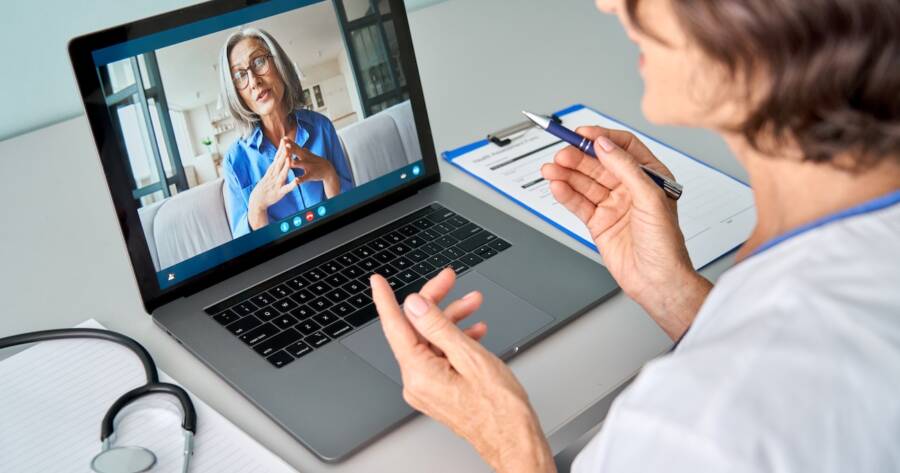Telehealth monitoring is becoming an integral part of healthcare delivery, gaining relevance in a world adjusting to pandemics and varying access to medical services. Start a search to learn how remote telehealth monitoring is changing the way patient care is managed and delivered.
What is Telehealth Monitoring?
Telemedicine leverages digital technologies to provide healthcare services remotely, offering clinical and non-clinical services alike to improve the healthcare delivery system as a whole. Remote monitoring, one of the central methods by which telemedicine is delivered, gathers medical data from patients in non-traditional healthcare settings. This information is then electronically sent to healthcare providers for assessment and action. Remote patient monitoring has moved beyond the walls of large hospitals and is now being utilized in smaller clinics and even home-based settings.
The Role of Software in Telehealth
As the digital backbone of remote healthcare, software plays a crucial role in the effective delivery and management of telehealth services. Here are some of the ways in which software is used in telehealth.
Telehealth Software
Telehealth software is pivotal in the operation of remote monitoring systems, functioning as the intermediary between patients and healthcare providers. If you’re considering software for telehealth, key attributes to consider include user-friendliness, HIPAA compliance, and seamless integration with existing health records.
Software for Remote Monitoring
Software dedicated to remote monitoring telehealth captures and stores patient data from various medical devices like blood pressure monitors or glucometers. This kind of telehealth software is invaluable for early detection of potential health complications, enabling timely medical interventions.
Use Cases For Software For Telehealth
Bridging the gap between patients and providers, telehealth software facilitates care in a wide variety of scenarios. Here are some practical examples of how telehealth software is being employed:
- Chronic Disease Management: Patients with chronic conditions like diabetes or hypertension can now easily record their vital statistics using home-based devices. This data is transmitted via telehealth software, allowing healthcare providers to monitor progress, adjust treatment plans, and even anticipate potential complications.
- Mental Health Consultations: With the rise in mental health concerns worldwide, telehealth platforms enable therapists and counselors to conduct sessions remotely, ensuring patients receive timely care without the need for physical visits, thereby reducing potential stigma or logistical challenges.
- Post-operative Care: After surgeries, patients often require follow-up consultations. Instead of multiple visits to the hospital, telehealth software enables virtual check-ins, allowing surgeons to assess wound healing, address concerns, and advise on recovery, all from the comfort of the patient’s home.
- Specialist Consultations: For those living in rural or remote areas, accessing specialized medical expertise can be challenging. Telehealth software connects patients with specialists across the globe, eliminating geographical barriers and ensuring expert advice is always at hand.
- Medication Management: Pharmacists and doctors can review, adjust, and prescribe medications via telehealth platforms. This is particularly beneficial for elderly patients or those on multiple medications, ensuring that prescriptions are up-to-date and that potential drug interactions are closely monitored.
From managing chronic diseases to ensuring that expert advice is accessible, this technology is making patient care more personalized, proactive, and patient-centric.
Top Software Options
There are several leading telehealth platforms available, each boasting its unique set of functionalities. Some of the most recognized in the industry include:
Teladoc: Celebrated for its comprehensive suite of services and its intuitive user interface, making it easy for both patients and healthcare professionals to navigate.
Amwell: A platform that prides itself on its high customizability and is particularly noted for its concentrated emphasis on clinical features.
Doctor On Demand: Not only does it offer a plethora of features, but it also uniquely provides options such as lab testing and specialized psychiatric services.
MDLive: An emerging platform that covers a broad spectrum of medical disciplines, from dermatology to counseling, ensuring a comprehensive healthcare experience.
HealthTap: Distinguishing itself with its instant access to doctors and personalized health content, it’s a tool that melds immediate medical advice with preventive information.
Benefits of Remote Telehealth
There are many benefits to telehealth and remote monitoring. Convenience is a primary one, as patients can transmit vital health data to their doctors without stepping out of their homes, all thanks to advanced telehealth software. Remote monitoring allows for continuous data collection in real-time, offering a fuller picture of patient health over traditional clinic visits. The best telehealth platforms even include analytics features to help healthcare providers in data interpretation.
Perhaps most importantly, telehealth is invaluable in expanding healthcare accessibility. For patients in rural or remote regions or with physical limitations, telehealth software provides a lifeline to medical guidance and monitoring, overcoming geographic barriers.
Challenges and Considerations
Telehealth and remote monitoring bring their own set of challenges, particularly in the domain of data privacy. Ensuring that health information is securely stored and transmitted is paramount. Additionally, despite its potential, current telehealth software has limitations. Poor network connectivity can impede the smooth transmission of data, and device compatibility can be an issue.
Finally, digital platforms cannot wholly replace the richness of face-to-face interaction, posing a challenge to the traditional patient-provider relationship. While telehealth and remote patient monitoring offer many conveniences, building trust and understanding through these mediums can be a hurdle.
Start a Search
Telehealth is revolutionizing the way healthcare is delivered and experienced. Whether you’re a patient considering accessing services remotely or a provider wondering whether you should offer them, there’s much to learn about the depth and breadth of this tech. Start a search to learn more and stay up to date as telehealth software continues to evolve and change the healthcare landscape.

